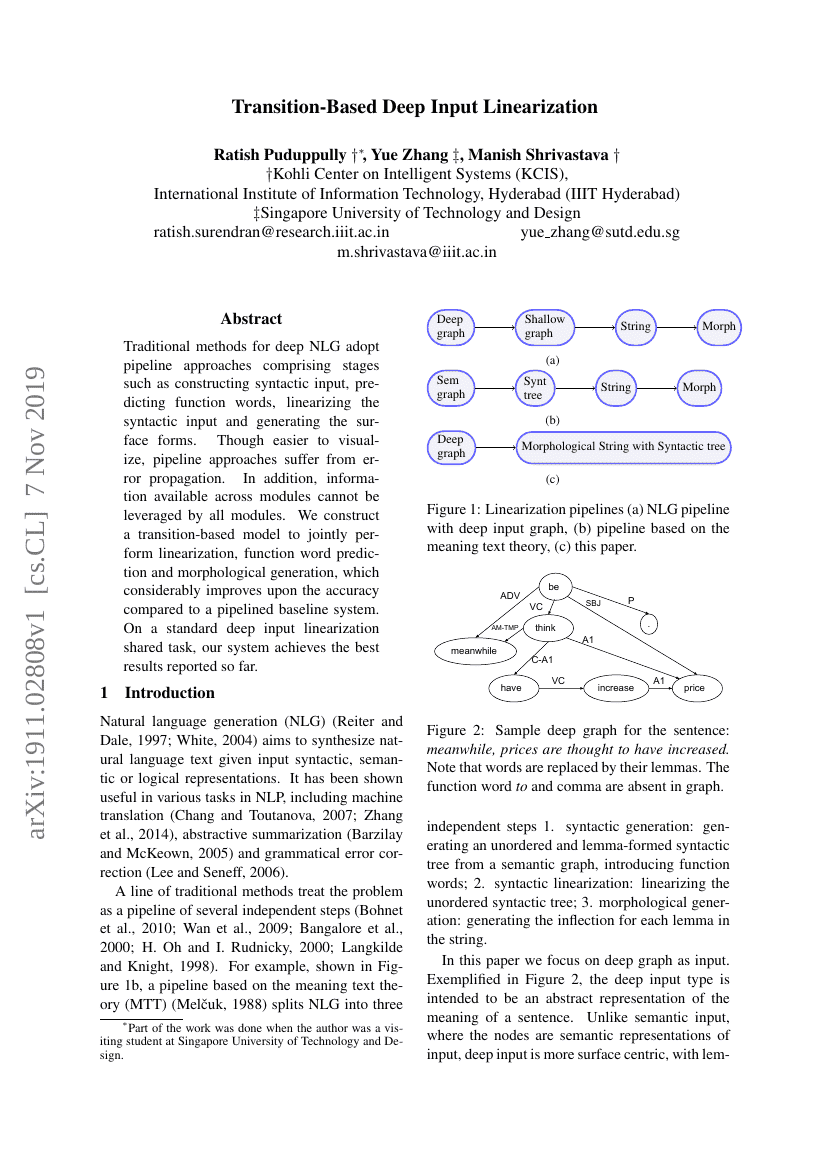Command Palette
Search for a command to run...
Ratish Puduppully Yue Zhang Manish Shrivastava

Abstract
Traditional methods for deep NLG adopt pipeline approaches comprising stages such as constructing syntactic input, predicting function words, linearizing the syntactic input and generating the surface forms. Though easier to visualize, pipeline approaches suffer from error propagation. In addition, information available across modules cannot be leveraged by all modules. We construct a transition-based model to jointly perform linearization, function word prediction and morphological generation, which considerably improves upon the accuracy compared to a pipelined baseline system. On a standard deep input linearization shared task, our system achieves the best results reported so far.
Code Repositories
Benchmarks
| Benchmark | Methodology | Metrics |
|---|---|---|
| data-to-text-generation-on-sr11deep | Transition based Deep Input Linearization | BLEU: 80.49 |
Build AI with AI
From idea to launch — accelerate your AI development with free AI co-coding, out-of-the-box environment and best price of GPUs.